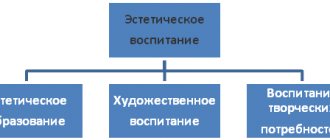Where does the formation of environmental awareness among preschoolers begin in preschool educational institutions?
The first step is to create conditions for this work: a corner of nature with an aquarium, small animals in a group, a small winter garden, a nature museum. A living area can contain birds, fish, reptiles, and small animals.
The guys feed them, clean them, observe them, and study their characteristics. Walks are also important, when children observe and draw conclusions about certain phenomena in living and inanimate nature.
The role of parents in environmental education cannot be belittled. Now families have cats, dogs, parrots, and turtles. There are aquariums and indoor plants. Adults should daily introduce children to the world of nature, to comprehend its secrets, so that from early childhood a feeling of unity with the world around them arises.
Criteria for environmental education of older preschoolers
The famous teacher and scientist T. A. Markova believes that the main criteria can be:
- children's goodwill towards all living things;
- degree of interest in living and inanimate nature;
- desire to contact natural entities;
- ability to care for plants and animals.
Ecological culture allows you to live in harmony with the surrounding nature, feel responsible for your steps and understand the consequences of a harmful attitude towards the earth.
Creating a favorable ecological environment
The process will be successful when a favorable, positive ecological environment is created around the child.
The presence of experimental plots in the garden, an ecological trail, a winter garden, an aquarium, and a living corner makes it possible to increase the efficiency of all forms and methods of work in this area.
There should be no unfoundedness. Children need to see everything in person, touch it, smell it, stroke it. Then the common efforts of educators and parents will bring results.





